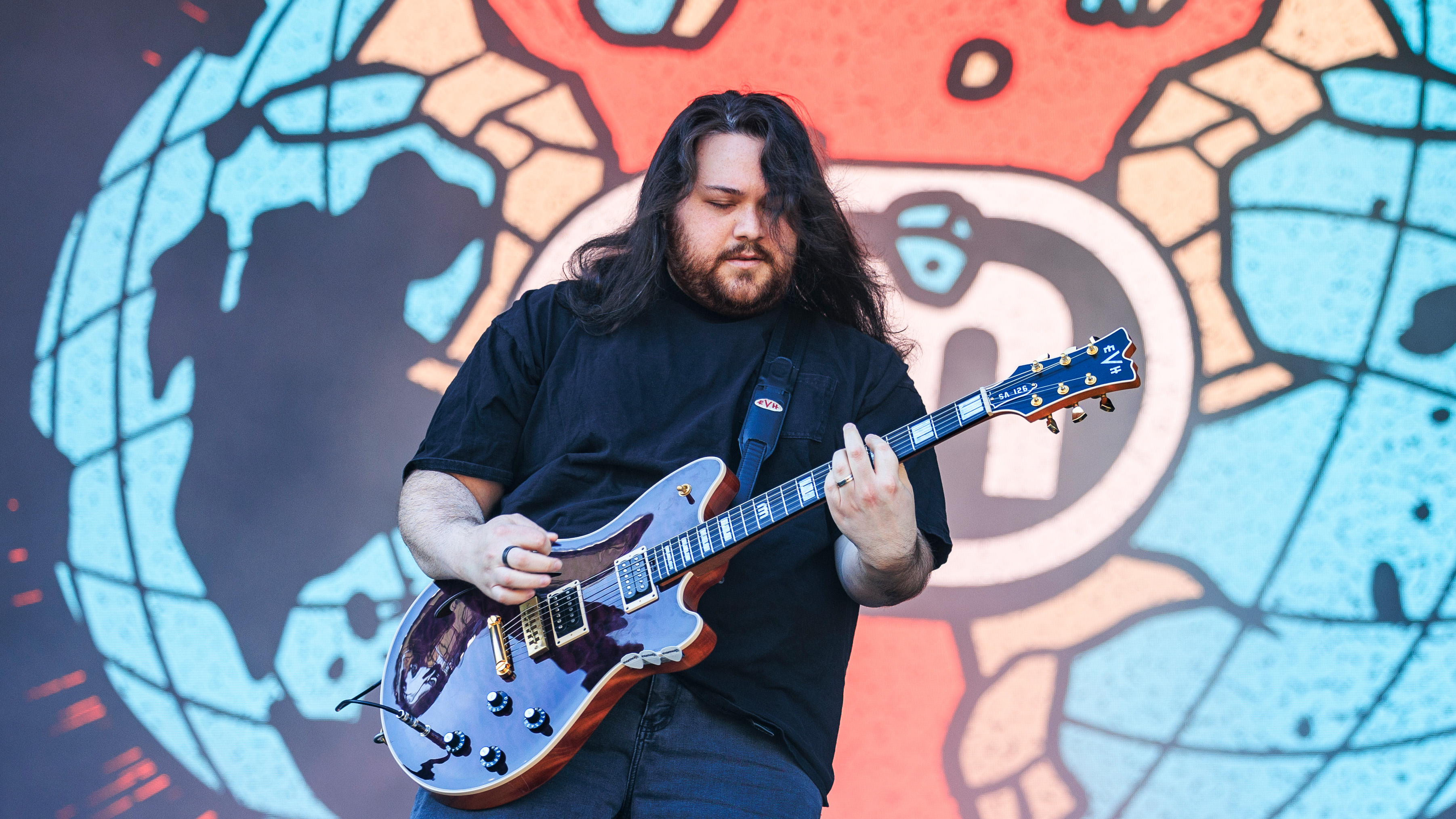
Seeing Mammoth WVH onstage in the glorious sunshine at Oslo's Tons Of Rock 2024 festival is a reminder of how far Wolfgang Van Halen's band has come in a relatively short time. They belong on big stages and the three-guitar lineup alongside Frank Sidoris and Jon Jourdan is undeniably powerful. But behind the scenes is a songwriter who has put years into this – and that includes the guitar Wolfgang has proudly introduced as his signature model; the EVH SA-126.
It's a guitar that is very much in the spirit of the EVH legacy; bringing something genuinely fresh and accessible to the market but designed with an artist's needs. Semi-hollow guitars are not often regarded as ideal hard rock instruments but the SA-126 will change that perception. This guitar is versatile because it needs to be and on the Oslo stage I can hear the results of Wolfgang and EVH's vision paying dividends, with huge potential for other players too.
"The testing period was almost three years," he tells me backstage at Tons Of Rock before his set. "When we started touring in 2022 I was able to bring it out on the road too. We had the first three prototypes."
I couldn't be more proud of how low we were able to get the price
After enjoying the semi-hollow tonality of an ES-335, Wolfgang sought to bring some of that to a guitar that could deliver in the studio and live for the songs he was creating for Mammoth WVH's second album, the appropriately named Mammoth II. But he always thinking about making sure other players could enjoy the pro-spec guitar he was developing with EVH's Matt Bruck, Chip Ellis and Fender's pickup designer Tim Shaw.
"I couldn't be more proud of how low we were able to get the price," he tells me. "And include an awesome case with it. It was one of the most important things and I feel like we landed at the perfect price. You get your bang for your buck. It's worth it."
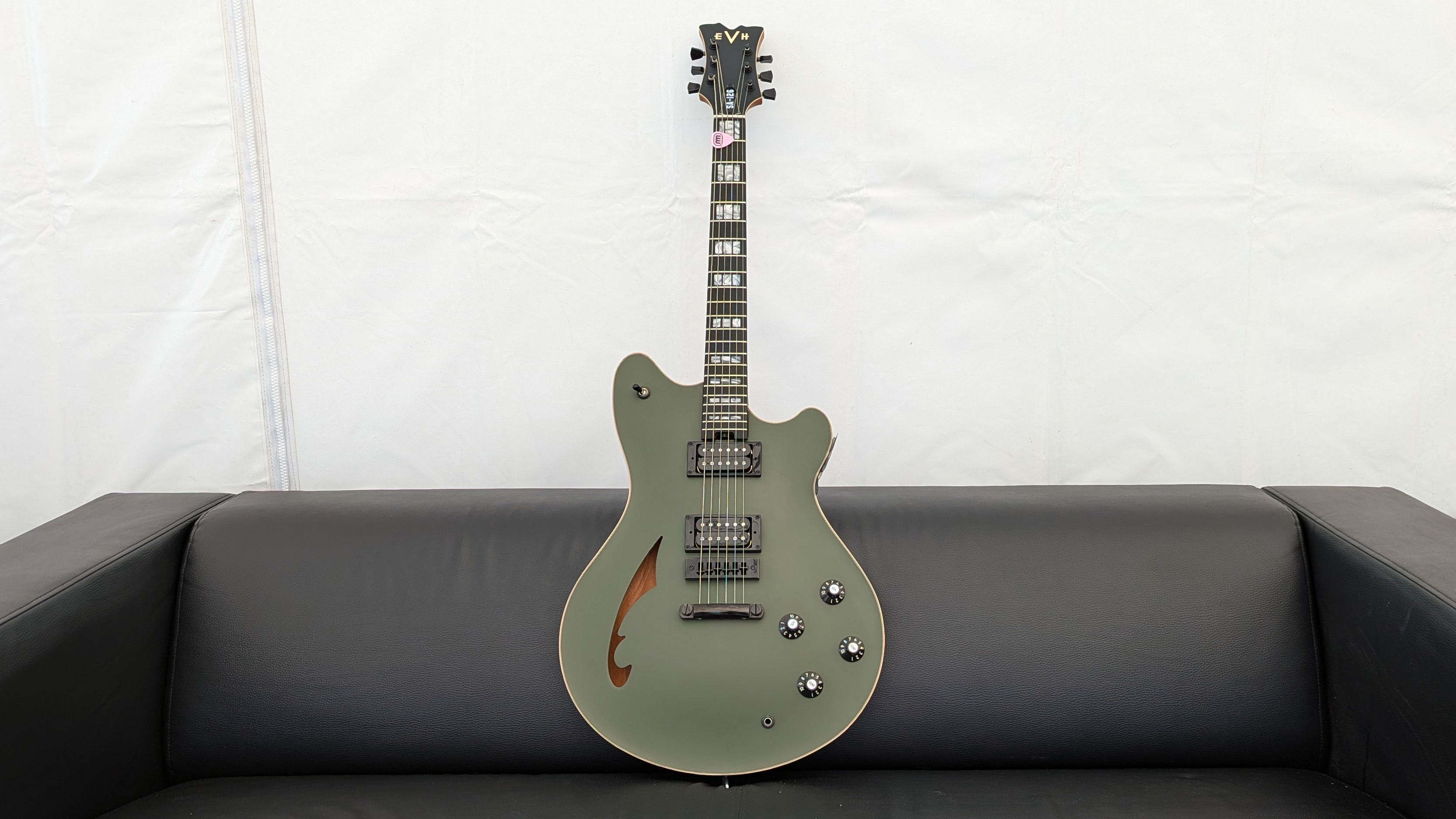
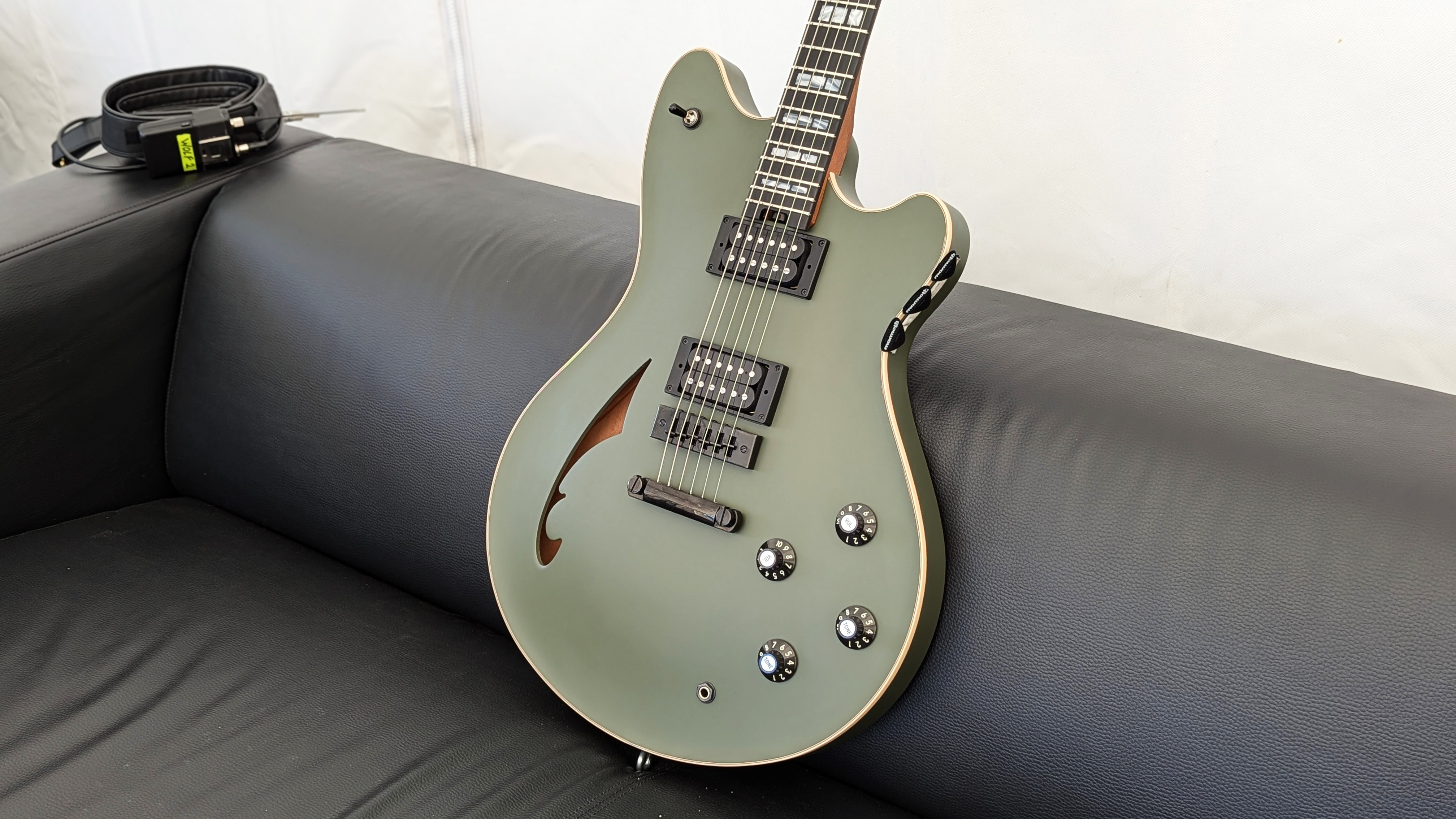
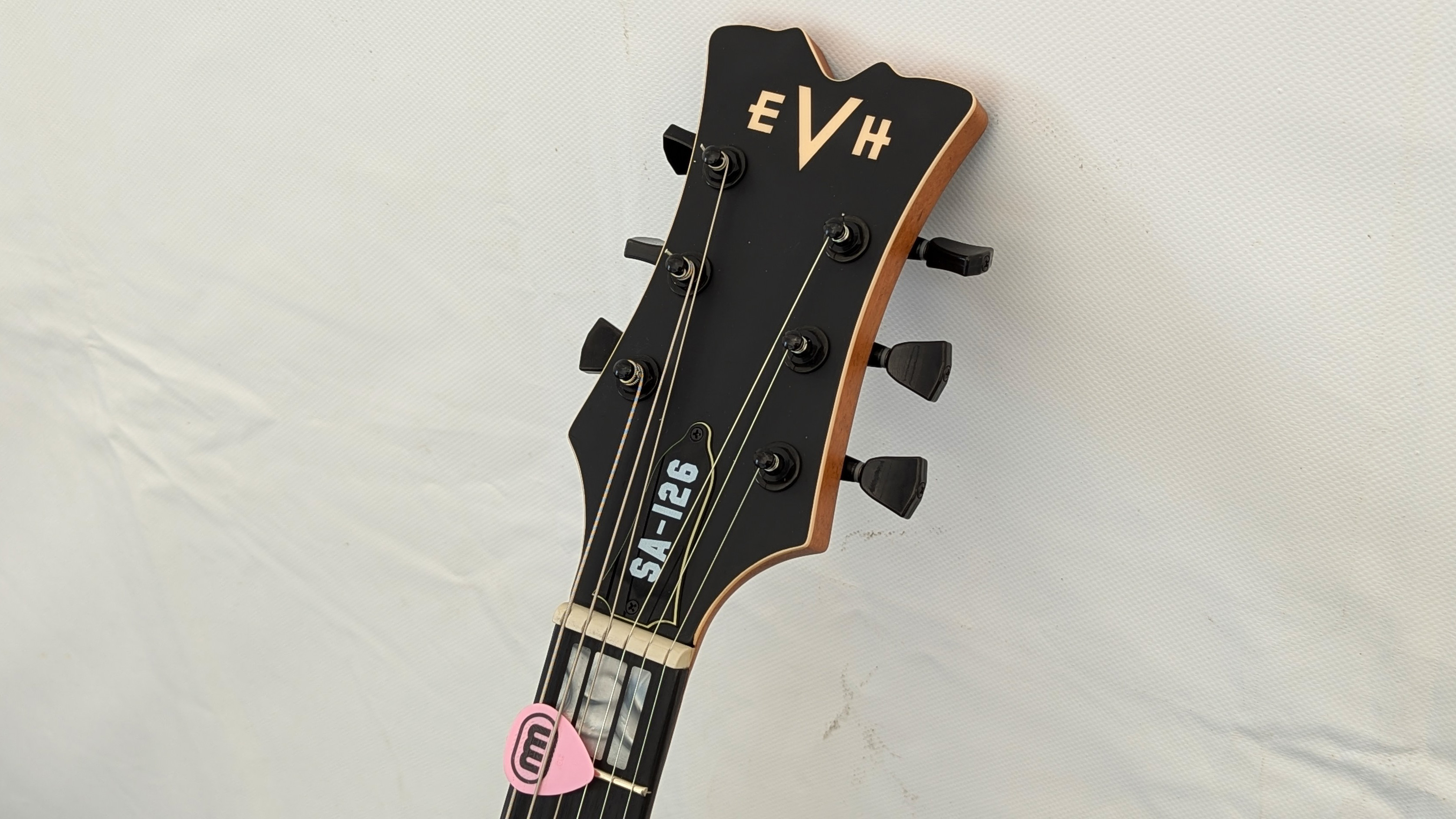
What attracted you to semi-hollow guitars originally?
"The big thing that drove me into semi Hallows was just wanting to sound different from my dad, I didn't just want to do everything he did. We use the [EVH signature] amps and everything in Mammoth, but in terms of guitar tones themselves, I just moved towards semi-hollows early on.
"I remember one of the first demos I tracked, my producer Elvis [Baskette] and I were looking for different guitars to use and he said, 'Let's try this 335'. And we pulled it out and it sounded amazing. And then I just fell in love with semi-hollows. That's just what turned into this."
Most semi-hollow pickups are wound at 8.2k
Now a lot of players don't equate a semi-hollow guitar design as being suitable for higher gain tones. How did you meet those challenges?
"They are slightly beefed-up classic pickups. We got to go out and we work with the legendary Tim Shaw [Fender pickup designer]. Most semi-hollow pickups are wound at 8.2k [DC resistance]. And we tried three different ones; we did an 8.2, a 10.2 and a 12.2. The 12.2 was way too hot, but like Goldilocks 10.2 was just right.
"I found that you could control the feedback if you wanted, but also you've got a little bit more of that beef to coincide with how thin and shreddy the neck is. So it's sort of that perfect blend of just a very luxurious, classy body with a crazy shreddy neck, modelled after the Bumblebee black and yellow [Eddie Van Halen model]. It's really flat, really wide and so fun."
I think people see semi-hollows and think, 'That's not a heavy guitar'. Man, it is – you can play metal on thisSA-126
Do you find as a semi-hollow it's good for the bottom end with heavier sounds too?
"I think so. There's a lot heavier stuff on Mammoth II too. My first prototype is the one guitar I used on the whole album. Maybe 5% wasn't – I played the Frankenstein on the solo of Take A Bow and stuff like that. But [the SA-126] is so beefy, and so aggressive. I think it will really change your mind about semi-hollows. I think people see semi-hollows and think, 'That's not a heavy guitar'. Man, it is – you can play metal on this."
These pickups are obviously versatile for the range of tones you need in your music but do you tend to use the neck pickup for clean tones live?
"It's funny, I rarely do – live I don't at all. A good clean tone to check out is the intro to the song Take A Bow. That was on the middle position. It was a nice blend of both. Live, I usually have the neck pickup turned off on the volume control and I switch to it when singing, like for a part of a verse, I move to that position. Usually for the very first verse I use it and it's just a quick mute toggle."
That's interesting, I never thought of using it that way.
"Yes, it's a quick mute. I think maybe that's just from emulating Tom Morello when I was 12, the Bulls On Parade scratchy solo."
Do you tend to use the bridge pickup volume to control gain live?
"It depends on what song but yeah, definitely. And it's it's right there, easy to grab. I love the witch hats too."
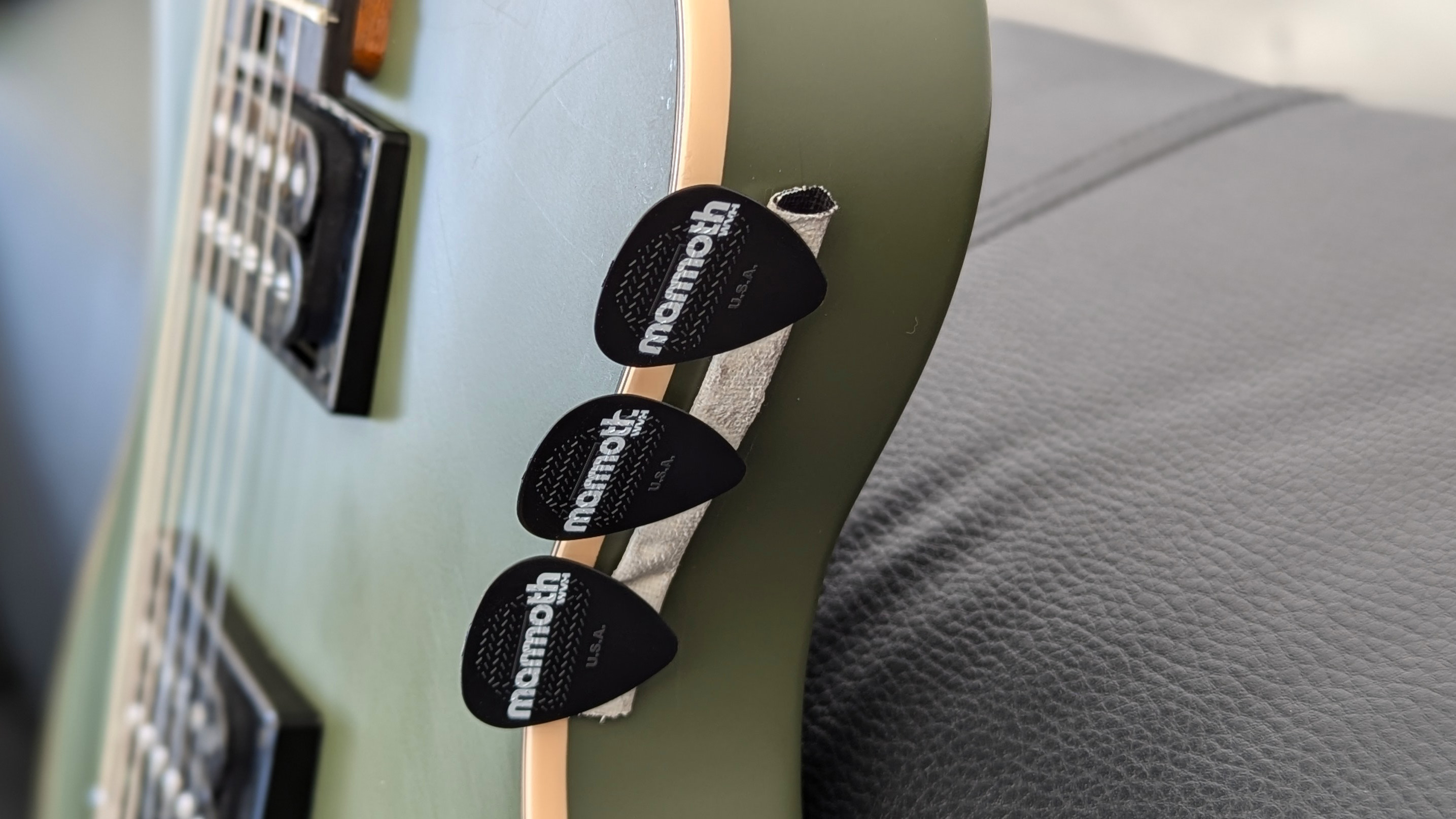
What was the attraction of jumbo frets for you?
"I just think it sounds better and it feels better really. It was just a matter of preference between Matt Bruck, Chip Ellis and I – kind of the brain trust. Chip Ellis is the master builder. Matt Bruck started the brand with my dad. He's been working for 30 years so now we're running it so that those decisions with the harmonica bridge and the jumbo frets, we all just love them."
Are you playing your SA-126 guitars stock onstage?
"Oh yes, these are still early prototypes. I'm not able to get any production models yet [for European touring] because we're getting them out there as much as we can. And so I'm still using this early production model.
"The purple one is a test colour. And I have two green ones, which were early production models. But then in the States, I have every single one that I can have on the road with me. Crazily, it's this year that we need an A and a B rig [for US and European touring]. But as soon as I get a bunch of production models I'll replace everything [in the B rig for Europe]."
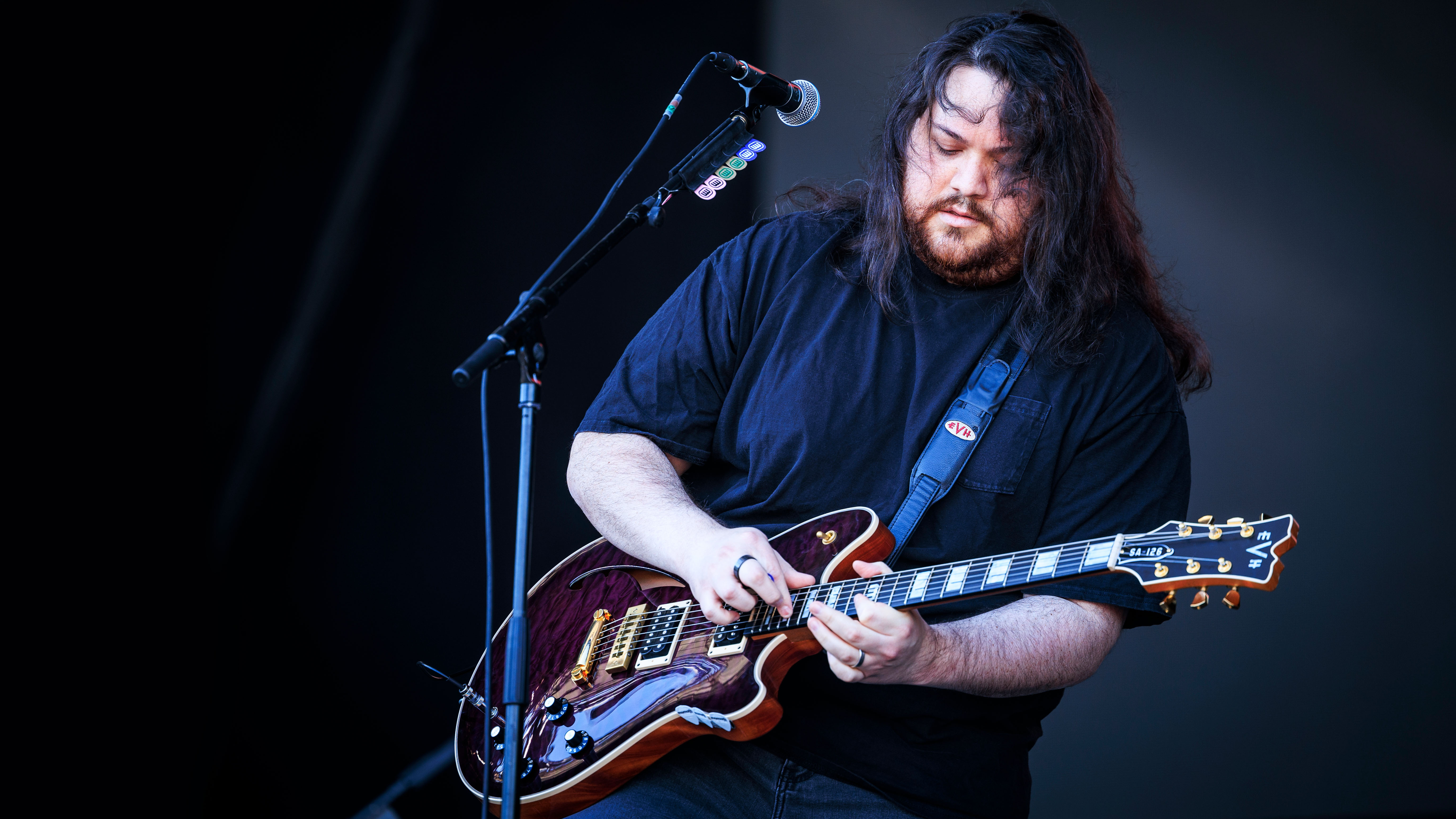
Do you use many pedals live?
"No, I would like to rely on pedals but in the studio it's really just stuff to make it sound good. So I really have a very stock pedalboard, I just I have all the EVH pedals. The one that I do use a lot is the Earthquaker Devices Afterneath reverb pedal that I mixed with my Boss delay, that gets really nice and washy but other than that there are parts where I'll need to use the flanger. But really, more than not I'm just having fun."
You're a multi-instrumentalist but the role of a singer-guitarist especially is often underappreciated. How have you approached delegating the parts you write and play on the records to the other guys?
"I think the benefit of having such an amazing live band is that I can just trust them to handle that stuff. My main priority is making sure I can sing well and while I would like to, and there are definitely moments where I can tackle some difficult guitar stuff, more often than not I'll definitely hand them more guitar stuff so I can make it easier to sing."
A singer on the road has to be really careful to look after their voice too.
"Like my great friend Myles Kennedy put it in a really great way when we were talking about it, it's like being the pregnant woman of the group. You're around smoking, everybody's partying, everybody's loud. And you just want to stay quiet, stay by yourself. And it's tough because you can't restring your vocal cords the day of the show. You just have to work with what you have."
How do you feel that touring your first album influenced the sound of the second?
"For me really there were two things that really went into the heavier shift, I guess, from the first to the second album. One was playing live just in general and wanting more upbeat, heavier, pulse-pounding sort of rhythms. I think that's where Another celebration came from - to have a really fast, sort of fuck-you song.
"Then another thing was doing the Taylor Hawkins tribute. I think, finally sort of exercising the comfortability with doing a little shreddy solo every now and then felt like I wasn't copying my dad but being able to be myself in that same space. And I think once I was able to conquer that and do that whole statement, playing the Van Halen songs at the Taylor Hawkins tribute was, for me, it took a lot of pressure off and I was able to have a bit more fun.
"Not that every song needs a solo. It certainly doesn't and it's more about songwriting when it comes to Mammoth, but it definitely allowed me to take the weights off and shred a little bit for certain songs on Mammoth II."
You're a guitar player with a bigger picture approach that's more like a producer because you play bass and drums too. Do you think you approach things quite rhythmically?
I think I approach guitar playing, like you said, more as a producer and more as a drummer than a guitar player. I think rhythm is always the first thing for me and melody is the second.
A really core thing for me that my dad always instilled is that a solo should be melodically memorable
"You can play a solo that's one note that can be way more impressive than a solo that's 2000 notes. It's not really the speed at which you play. A really core thing for me that my dad always instilled is that a solo should be melodically memorable. You can have those fun little wank moments.
"I think a good example, and I can never shut up but how much I love this guitar player, is Aaron Marshall from Intervals. We toured with them lately and he's such a great example of what my dad and I love about solos where he's very melodic. He's basically a singer as a guitar player. But he has those moments where he does these impressive, awesome shreddy runs."
I was going to ask you if there's an unsung guitar player out there who you'd like to highlight for listeners and Aaron Marshall is a great candidate.
"Everybody needs to listen to intervals. Not only is he an amazing person and the band are amazing guys, but their music is very special and important to me. Incredibly influential, and if anybody has ever listened to me and really enjoyed it, go listen to their new album Memory Palace is amazing."
What about a track for newcomers to seek out first?
"Check out 5-HTP from the album before this one [Circadian], it's one of my favourite songs ever."
-
Mammoth II is out now on BMG and the band will play UK dates in July before a US tour. More details at mammothwvh.com
For more info on the SA-126 check out EVH Gear. Stay up to date on Tons Of Rock's 2025 lineup over at tonsofrock.no







